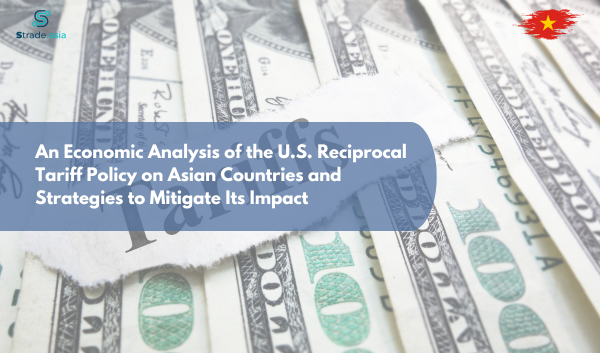The 2022 electronics supply chains have been under an enormous amount of pressure since the start of the Covid-19 pandemic, with component shortages leaving many manufacturers scrambling to meet growing customer demand.
Many have entered 2022 optimistic that things will become more positive. However, as things stand, prudence is important, with the electronics sector still experiencing significant supply chain disruption.
To avoid component shortages affecting their business, manufacturers must look to learn from the past two years, carefully plan ahead. Ultimately, they might want to consider transform their supply chains to be more resilient, flexible, and efficient. In 2022 and beyond, OEMs will likely implement multiple strategies that take advantage of new technologies and data analytics, allowing for greater flexibility when responding to disruptions.
Here’s what to expect in 2022.
Continued disruption
Whilst Covid-19 has certainly been a large contributor to supply chain instability, it is not the sole reason we’ve seen disruptions over the past two years. In fact, the pandemic has simply exacerbated pre-existing supply chain issues.
Due to an overdependence on outsourcing and overseas manufacturing, too much reliance on ‘just-in-time’, and reducing suppliers, global supply chains have been in a fragile state for some time. Covid-19 has simply shone a light on these underlying issues.
Supply chain disruption still persist in 2022. Although there were signs of the world beginning to return to ‘normal’, the effects of the pandemic are about to last for some time.
Demand for electronic products continues to outweigh supply, putting pressure on manufacturers. With more people working from home, the shift in working practice has resulted in increased demand for electronics for both business and pleasure purposes.
Concurrent logistical disruptions, including driver shortages and the backlog of shipping containers around the globe, have only exacerbated the issue. Roughly 80% of shipping disruption is due to the inefficiency of North American ports.
The ports of Los Angeles and Long Beach are responsible for most of the delays, with 101 ships waiting to berth on 1st February 2022, compared to 40 on 1st February 2021. The port congestion is about to persist this year, and may not ease until late 2022 / early 2023.
Price increases
Thought we had left price increases behind in 2021? Think again. It is likely, that despite the best efforts of component manufacturers, we will continue to see prices rise throughout 2022 and potentially beyond.
Average component costs increased nearly 15% in 2021, with certain components such as semiconductors being subject to increases as high as 40% since 2020. A lot of these raised prices put on to the consumer. Computers and other consumer electronics all experienced significant increases. Price increase largely due to the global scarcity of semiconductors, the limited availability of raw materials, freight and packaging cost increases, and capacity constraints.
Careful Forecasting
2021, component manufacturers and distributors advised their customers to raise and schedule purchase orders months in advance in order to secure stock. With many components still facing extended lead times, this practice persists through 2022 with the aim to help avoid customers receiving products later than expected.
Due to fluctuating lead times and ongoing manufacturing and logistical disruptions, even with careful planning, you may not receive your order in full or on time. OEMs may look to invest in new technologies allowing for more precise predictions.
Industry 4.0

Industry 4.0
OEMs and CEMs are aware of the current supply chain issues caused by outdated technologies, methodologies, and pandemic restrictions, and are working hard to adapt to their new environment. It has become clear that manufacturers must develop an efficient end-to-end strategy that optimizes the supply chain and keeps costs low.
The fourth industrial revolution, or Industry 4.0, is gaining traction, and we expect this to continue into 2022. Industry 4.0 has revolutionized manufacturing and distribution processes.
The adoption of new technologies, including the Internet of Things, AI and Machine Learning, and analytics and cloud computing has led to increased automation, self-optimization of process improvements, predictive maintenance, and a new level of efficiency that was previously impossible to achieve.
The adoption of new technologies, including the Internet of Things, AI and Machine Learning, and analytics and cloud computing has led to increased automation, self-optimization of process improvements, predictive maintenance, and a new level of efficiency that was previously impossible to achieve.
Industry 4.0 technologies implemented at each stage of the logistics chain allow for the smart supply chain management. It allows businesses to adopt a data-driven approach. Manufacturers can collect data to drive insights, incorporate intelligent solutions, and automate activity. Resulting in cost savings, increased productivity, and reduced disruptions to their supply chain.
Traditionally, simplistic analytic tools and manual data-gathering methods have gained popularity among manufacturers. These processes are not only time-consuming but also limit a company’s ability to accurately predict demand and potential supply issues. AI and machine learning algorithms allow for more precise predictive analysis as a range of both internal and external factors can be considered.
Conclusion
Many industries have suffered over the past two years, but the manufacturing sector has been hit particularly hard. However, the pandemic only shined a light on pre-existing faults within the global supply chain which was becoming outdated.
Whilst manufacturers have worked hard to keep up with demand and mitigate disruptions in 2020 and 2021, the 2022, OEM, ODM, and electronics supply chains will see many attempting to be future-proofed through addressing current issues and investing in upgrades. Careful planning and close customer/supplier teamwork will be necessary through 2022 to ensure OEMs can continue to deliver products to customers in a timely manner and at an acceptable cost.
Whilst manufacturers have worked hard to keep up with demand and mitigate disruptions in 2020 and 2021, the 2022, OEM, ODM, and electronics supply chains will see many attempting to be future-proofed through addressing current issues and investing in upgrades. Careful planning and close customer/supplier teamwork will be necessary through 2022 to ensure OEMs can continue to deliver products to customers in a timely manner and at an acceptable cost.
Strade works hard to build close working relationships with our customers and our supply partners, this combined approach offers the best chance to minimize the effects of supply chain disruption. Strade’s global procurement teams operate full supply chain management and can often track down components that are hard to source. With strong engineering expertise, our teams are able to identify components that have a high risk of obsolescence and can recommend alternative components or design alternative solutions.
----
Contact us via:
Email: sale@strade.asia
Tel: (+84) 84305 6868
Fax: (+84) 84305 6868


